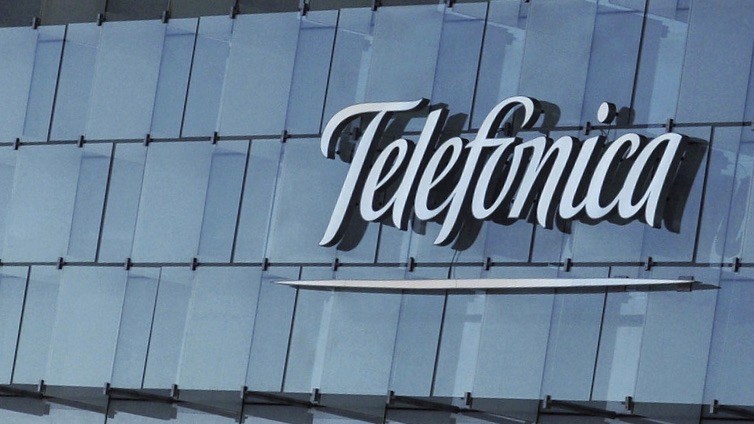
- Spanish telco is offloading the unit that owns and runs its cellular tower sites
- The buyer, American Tower, gains more than 30,000 sites in Europe and LatAm
- Deal makes “strategic sense,” says Telefónica President
- Towers sector is hot – this is not the first M&A deal of 2021
Telefónica has agreed to sell its Telxius towers division to American Tower for €7.7 billion in cash, a move that makes “strategic sense within our roadmap,” according to the Spanish operator’s President José María Álvarez-Pallete.
The deal fits into the ongoing trend for telcos to reduce their physical asset portfolios and rely more on shared third-party assets, a move that gives them greater flexibility but also means they cede control over the foundational technology platforms that underpin and support their services.
Telefónica bulked up the towers division of Telxius, the infrastructure unit in which it holds a majority stake (50.01%), last June when it conducted an internal acquisition that resulted in the transfer of more than 10,000 towers from Telefónica Deutschland to Telxius.
Following that move, speculation swirled about Telefónica’s next move: Would it sell its towers assets outright to private equity? Spin off the unit with an IPO? Sell a slice of the business to a neutral towers company? Rapidly expanding towers company Cellnex expressed an interest in such a deal in November last year.
But it is existing partner American Tower, which was already a significant provider of tower site services to Telefónica, that has stepped up with a cash deal. It will add 30,722 sites – about 80% in Europe (Spain and Germany) and the remainder in Latin America (Brazil, Peru, Chile and Argentina) – to its existing portfolio, which already comprises 184,000 communications sites, of which 44,000 are in North America (mostly the US), more than 74,000 are in India, more than 41,000 in Latin America, just over 19,000 in Africa and about 5,000 in Europe (the vast majority in France, with 2,825, and Germany, with 2,211).
Once the deal is completed, American Tower will be Telefónica's leading supplier of tower services “in both Europe and Latin America and maintains its status as a partner in strategic projects in Brazil, Argentina and Colombia,” the telco stated in its official announcement.
American Tower said the assets will generate revenues of about $775 million and earnings before costs and taxes of about $390 million in the first full year of ownership: The deal is structured in multiple parts (because of the geographic spread), with the first “tranche” of the deal set to be completed during the second quarter of this year. American Tower’s current annual revenue run rate is about $8 billion, based on its third quarter 2020 results.
It has also committed to spending about $500 million on building about 3,300 new sites, mostly in Germany and some in Brazil, where Telefónica will be a tenant by 2025.
For Telefónica, the deal will help it reduce its net debt by about €4.6 billion, which is one of its key corporate objectives: Also at the top of that list of goals is “the integration of O2 with Virgin in the United Kingdom” and “the purchase of Oi mobile in Brazil,” noted Álvarez-Pallete. Telefónica is part of a consortium that is acquiring the Oi mobile operation, while the planned £31 billion merger of O2 (Telefónica UK) and Virgin Media is currently under scrutiny by the UK’s Competition and Markets Authority (CMA).
And at a broader strategic level, the sale of its mobile towers meets “the main objectives of the roadmap set out approximately a year ago: to boost opportunities with the greatest growth potential, leveraging the value of our infrastructures; to increase agility and improve efficiency; and to create value with a long-term sustainable model by achieving operational excellence,” stated the operator.
Investors liked the news, as Telefónica’s share price jumped by more than 10% to €3.96 on the Madrid exchange.
Telxius, it should be noted, will still continue to exist after the deal as it also has subsea cable network assets, being a participant in 12 submarine networks, including two of the largest, MAREA and BRUSA. It is part of a larger unit within the telco, Telefónica Infra, which “will continue to focus on the development and monetization of towers, distributed antenna systems, data centers, greenfield fiber projects and submarine cables, among others,” the operator stated.
Telefónica isn’t the only operator taking this approach to its physical assets: Vodafone has formed a standalone unit, Vantage Towers, and is planning an IPO in the coming months; TIM (Telecom Italia) and Vodafone have already cashed in on their joint towers firm, INWIT, by selling a slice of the venture; and Orange is still considering what course of action to take with its portfolio of 59,000 towers across the EMEA region.
And of course, neutral host specialist Cellnex has been mopping up tower assets in the past few years, most recently splashing €10 billion on Hutchison’s European portfolio in a deal that took its total site number in the region to more than 100,000 (including planned builds).
The Telxius deal isn’t the first towers M&A announcement of 2021: IHS Holding completed the acquisition of 1,000 sites in Brazil from Skysites, taking its total to almost 29,000 across Latin America, Africa and the Middle East.
- Ray Le Maistre, Editorial Director, TelecomTV
Email Newsletters
Sign up to receive TelecomTV's top news and videos, plus exclusive subscriber-only content direct to your inbox.




